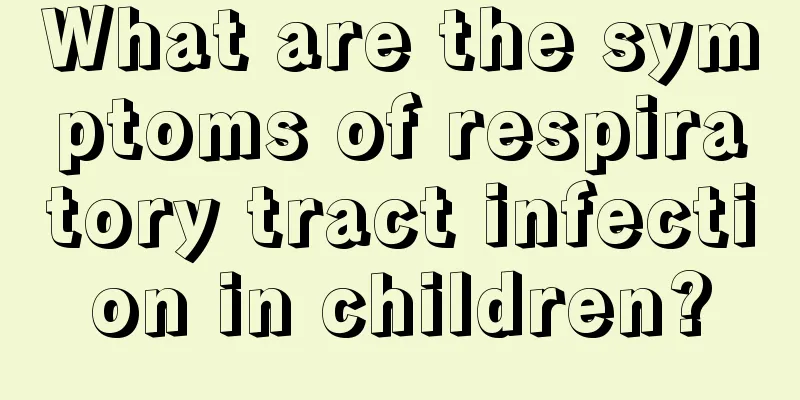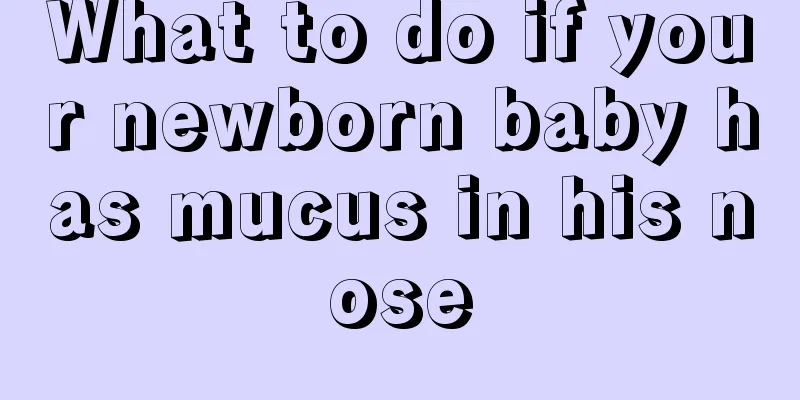What are the symptoms of respiratory tract infection in children?

|
Infants and young children have relatively poor immunity and are relatively weak in resistance to external pathogens. During the peak incidence period between three and four years old, bacterial pathogens are pervasive, and if they infect our children's bodies, various diseases can easily occur. For example, respiratory tract infection is one of the more common infectious diseases. If a child suffers from a respiratory tract infection, how should we treat it effectively? Let me teach young mothers two tips. 1. Common cold type: also known as acute rhinitis and cold, the onset season is more severe in winter and spring; local nasopharyngeal symptoms are more severe, such as nasal congestion, clear runny nose, sneezing, sore throat, etc., and systemic symptoms are mild or absent; nasal mucosal congestion, edema, and secretions can be seen, and the pharynx is mildly congested; the white blood cell count in the routine blood test is low or normal, and the proportion of lymphocytes is increased; the virus isolated in adults is mostly rhinovirus, and in children it is mostly respiratory syncytial virus. It usually heals itself in 5-7 days. 2. Influenza: Also known as flu, the disease has an acute onset, is contagious, and has variable symptoms, with systemic poisoning symptoms being the main symptoms and respiratory symptoms being milder. There are chills, high fever (39-40 degrees), general discomfort, soreness in the waist, back and limbs, fatigue, headache, dizziness, sneezing, nasal congestion, runny nose, sore throat, dry cough, and little sputum. Physical examination showed a very ill appearance, weakness, flushed face, congestion and edema in the nasopharynx, and a small amount of moist rales or wheezing in the lower lungs. Leukocytopenia and relative increase in lymphocytes. If secondary bacterial infection occurs, there may be yellow purulent sputum, rusty sputum, bloody sputum, chest pain, and an increase in the total white blood cell count and neutrophil count. The course of the disease is 3-5 days. 3. Pharyngitis type: The disease is more common in winter and spring; it is mainly characterized by inflammation of the pharynx, with symptoms such as discomfort, itching, burning sensation, and sore throat, which may be accompanied by fever and fatigue. During examination, there is obvious congestion and edema of the pharynx, and enlarged and tender submandibular lymph nodes. The white blood cell count in routine blood tests may be normal or decreased, and the proportion of lymphocytes is increased. Viruses isolated are mostly adenovirus, parainfluenza virus, and respiratory syncytial virus. It can be seen from this that when children have symptoms such as colds and fevers, parents should take our children to the hospital for treatment in time. Because the medicines we adults take are often not suitable for children's physiques, we should listen to the doctor's advice and prescribe medicines that children can take, and cure the disease in time to prevent further infection. |
<<: Why do children have trouble sleeping at night?
>>: How to treat cerebral palsy in children through surgery?
Recommend
What should I do if my baby cries when breastfeeding?
Breast milk is the best way to feed our babies. B...
How to treat acute otitis media in children
Acute otitis media is the most common ear disease...
Heart murmurs in premature newborns
If a newborn is born prematurely, it will be harm...
Symptoms of zinc deficiency in 4-month-old babies
Babies need a variety of nutrients and vitamins d...
What should I do if my baby's forehead is bruised?
Every baby will have bumps and bruises of varying...
What is the cause of the baby's geographic tongue?
When a baby is sick, it is necessary to understan...
What should I do if my newborn chokes on milk due to pneumonia?
How should pneumonia be treated? How should neona...
Baby memory training
We all know that everyone's memory is differe...
What's wrong with the pimples on the baby's body?
In the daily life of caring for newborns, parents...
Why does my baby's urine smell?
The physical health of the baby after birth is ve...
What are the symptoms of acute tonsillitis in children?
Acute tonsillitis is more common in children. Com...
What causes dizziness and headache in children?
According to statistics, more and more children h...
What are some appetizer snacks for kids?
Many parents have the worry that their children l...
Can newborns use rice pillows?
Newborns need pillows when they sleep. The materi...
What is the cause of cold and fever in children?
We all know that children's body resistance i...









